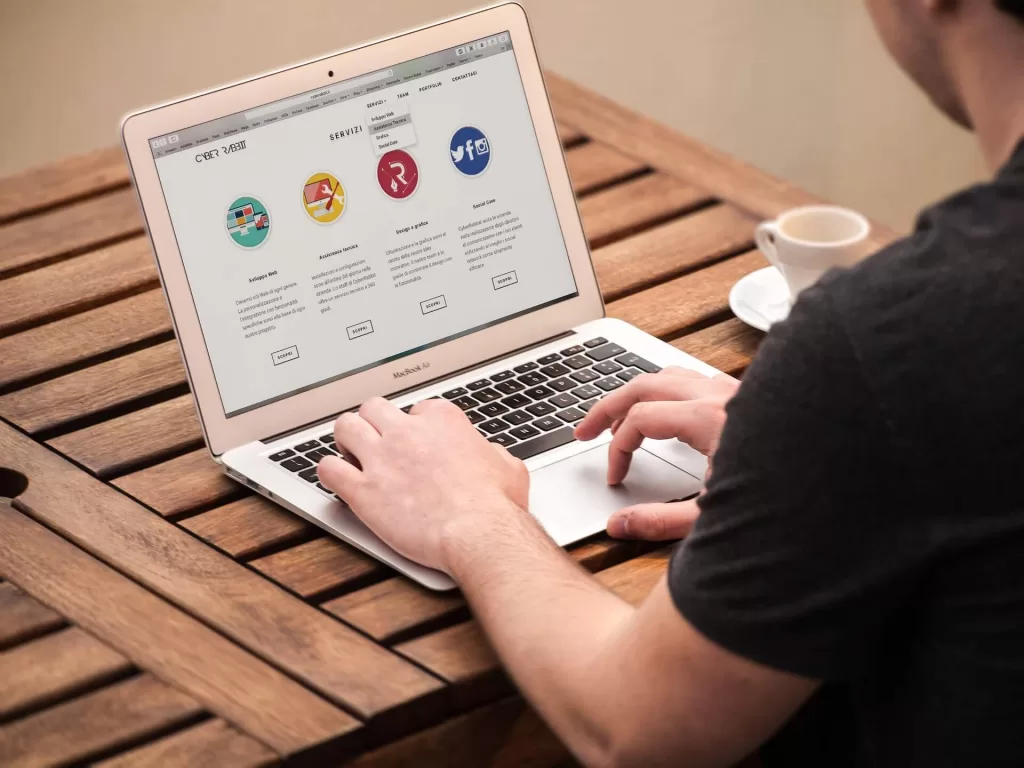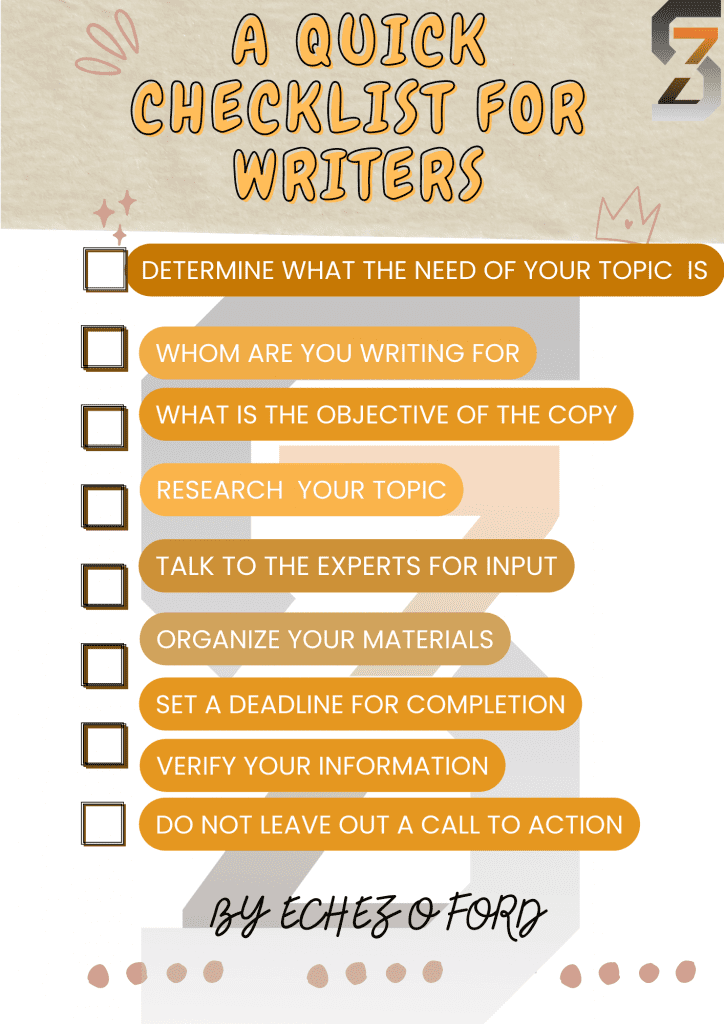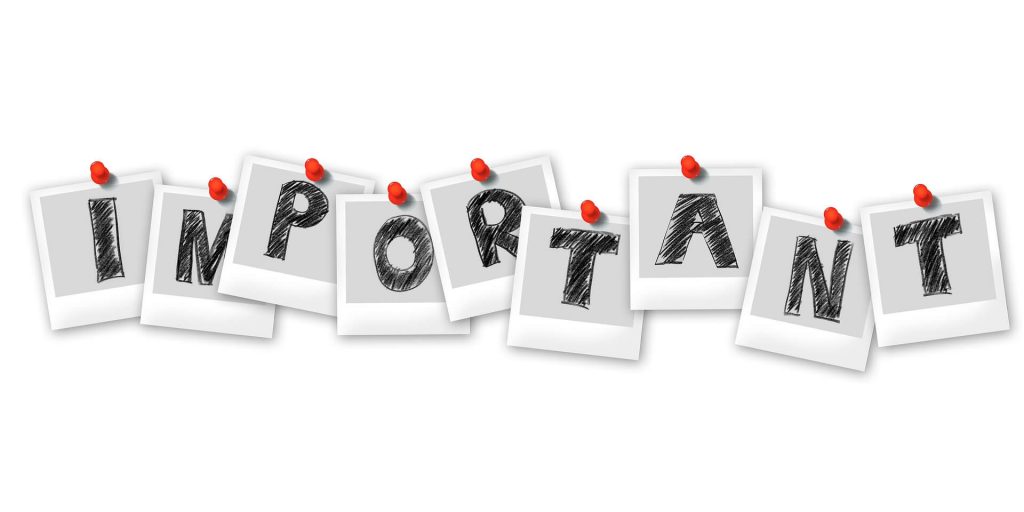Please Follow us on social media >>>>

10 FASTEST WAYS TO GET FREELANCE WRITING JOBS
75% of Businesses Fail Because of Bad Content. Don’t Be One.

If you ever dream of making money on the internet, then you must have heard that you should be ready to write informative content that people will read.
Table of Contents
ToggleIt is the goal of every writer to know and be proficient in how to write 2000-word engaging content in 30 minutes.
And you are probably wondering how on earth are you going to do that with all you already have on your schedule.
To write at least 2000 words that are engaging in the shortest amount of time is possible and you too can do it.
When done the right way, it can help you gather potential freelance leads that will convert to paying clients.
In this article, I am going to share with you how I handle my writing both for my clients and for my websites.
You can see it as a checklist to dish out high-quality and engaging articles suitable for both humans and search engines alike.
As you know, numerous writing needs are associated with owning a business on the Internet. You will have to write for your website, design a landing page, create your ad copy, invest some time in your social media promotions, reply to emails, carry out email campaigns, and numerous other posts that will be written too.
You do not just wake up and write, for your writing to be effective and achieve its purpose, you have to determine what the need is before you start writing. Here is the thing, this phase determines what area you are focusing on or taking your writing.
Let’s say you are writing for a twenty-first-century generation, you already know you are going to speak in a language they will understand. But if on the other hand, you are writing about buying a house for a senior citizen, that is a completely different game.
Is your writing intended to be informative, or is it to influence? Maybe you are writing to entertain, perhaps you have an audience that believes in you and you owe them quality content.
Whatever the case, you must have to stick to your obligation to fulfill the need for the copy.
Do not make the mistake I made by writing aimlessly. Now that you have figured out why you are writing, it is time to address your audience.

You should be able to lead your audience from the get-go and help them read throughout your content.
But this is not easy to do. Let me help you on this.
Knowing who your audience is will make life easier for you. That single knowledge will dictate your grammar, the structure of the copy you are writing, the tone, and even the length of your piece.
When you write techy stuff, the tone and structure will have to be different from when you write for a regular news mag.
Be sure to have a bit of knowledge of your audience even if you are writing as a freelancer. A little research on their demographic will do you much good.
You will notice that the objective comes before the research and that is for a reason.
If you do not know what the objective is, it will be difficult to know what to research.
What purpose will the content serve? Is it a marketing piece? If so, then build enough anticipation for your audience, and make it as catchy as possible. If on the other hand, you are putting together content for a home page, then the objective becomes to keep your site visitors on your site for as long as possible.
Now comes the fun part, the research. Yes, you heard it right, research is the fun part.
Let me show you how I manage to come up with valuable content
Considering that you followed all the above closely, you should by now have everything you need for your content.
You do not have to spend too much time researching if you have a good knowledge of the topic you are discussing. But you may need to research for 1 or both of the reasons below.
But if you want to research, as I strongly recommend you should then follow this cheat sheet:
Researching for content can be both fun and daunting. Daunting if you do it wrong, fun if you get a hang of it and do it right.
Before going into research, come up with the why, who, what, when, and how surrounding your topic.
This will give your effort some direction. Are you researching to answer a question raised on your topic? Are you providing information to prove a stance?
Is the content for presenting a proposition? Then come up with statistics, and quote reputable authorities. This will add to the quality of your copy. And the good part is that with the use of the internet, it does not need to take a long time to do just that.
Look for materials that will add value to whoever will consume them. Make it a duty to include factual information free of bias.
As you gather your information, make a note of the most important ones. Sometimes, l use a dictation app, where you just say the word and it rights it out for you to go back to later.
While you are on this, come up with the main points, those will serve as your subheadings.
Google is a good research tool that cannot be neglected, at least not today or anytime soon. So while they are still valuable, use them to your advantage.
When using Google, use the filters and advanced search to avoid irrelevant data showing up on your screen. If you land on competitors’ websites, they may not have information that will make your copy stand out.
Use the advanced search option well: in the domain area of your browser, use .gov .edu and things like that to come up with more concrete data for your writing.
Use Google Scholar to gather valuable information that will help in building your content.
Google books is another place to get quality input too
Do keyword research, among other tools at your disposal, is the Google keyword planner.
Soovle helps you see relevant search results from multiple search engines at once. Give it a try and you will be happy you did.
Follow acceptable search engine optimization techniques.
When you are done, then go to the next stage:
If you still need more information, talk to experienced people in the field you are writing about.
There are several places you can get them, you can use LinkedIn or reach out to universities and curate from their reports.
It is time to put all your thoughts together. All of the information you gathered from the above points will have to be arranged in a logical, coherent order.
Start with the subheadings, this gives your audience something they can glance at on the go and may decide to read through your content.
Followed by these are topical sentences. This type of sentence usually comes at the beginning of the paragraphs, they are intended to give the reader an insight into what the paragraph is all about.
When you move to the next paragraph, you should try to create a continuation to connect the flow of thoughts.
This takes us to the next one. Set a time when you expect to be done with your writing.
Spice your content up with visuals. There are both paid and free images you can use on your posts and articles.
You can check this article on 84 websites to get the best images for your content.
You cannot write on a single topic forever, unless you are writing a series you will have to call it a day at some point. So the best advice from professionals is to set a time when you will be done with the task of writing.
This will help you to put every effort into meeting the deadline, it will also help you keep your focus and avoid distractions.
Allocate a time for each of the major parts of your article or whatever it is you are writing about.
You may be so willing to jump into writing but it is not yet time. All the information you gathered from above may now need to be verified especially if you are not just writing fiction.
Did you use numbers and statistics? Find corroborating data to back them up. Are you discussing a scientific event? Find reputable sources to verify that information you have is safe to publish.
That is why I strongly advise you not to settle for just any results that show up on your search engine, even crappy misleading content can still make its way to Google’s first page.
If you can beat your chest and vouch for the accuracy of the information you are writing. Then go on and start writing your piece.
To be in a position where you can write at least 2000 words of quality content in less than 30 minutes, you need to pay attention to the following.
Subheadings first: Experts advise that you write out your subheadings and build from there. So make a list of all the main points you have gathered from your research and craft them into an enticing subheading.
Make sure to arrange them in a logical order or in such a way that it will make sense to the reader.
Build on the subheadings: under each of those subheadings, write a paragraph that explains the point your subheading is suggesting. This approach saves you a lot of time.
Introduction: of course, you should pay attention to your introduction. The introductory space allows you to build up anticipation for what your article or piece is all about.
Talk about yourself in the introduction: if you are an authority in the field you are writing about and you think your readers will care about knowing what makes you an authority, then briefly chip that into your introduction.
For example; if you are researching a sickness you are suffering from, it makes all the difference if you will continue reading or not if the writer introduces himself as a certified practitioner in the field. If the writer holds some notable accolade, and your respect and trust for the content appreciate more? That is the power of adding some titbit about whom you are but do it sparingly.
Now while the writing is ongoing, there are a few tricks of the trade that are good to pay attention to and I will list them in the next heading

Pay attention to this part as it holds the promise of your readers consuming your content. Make it stand out. Be bold and make a promise of what the explanatory paragraph is to talk about.
Problem with the introduction: when your introduction is not flowing, do not spend too much time on it, just go ahead and keep dishing out the valuable information in your content, you can come back to the beginning at any time.
Break your writing up with subheadings: in this age of impatience, people are no longer inclined to read a lot, research shows that people now scan through contents. And when they do that, it is your subheading that tells them if the writing is what they want or not.
In addition to that, it is good for search engines too. It helps make your article index easy.
Short is better: nobody will ever read through a massive chunk of information if they are not arranged in paragraphs. So do not make your paragraphs too lengthy otherwise, you will bore your readers to click the back button.
Fulfillment: before you start thinking of your conclusion, you must answer a few important questions
When you confidently fulfill all of the above, then your piece will have met your design objective
Do not overdo your conclusion: many writers tend to overburden their conclusion, so go back and remove some of the parts that have little or no bearing on the meaning.
Restate your introduction: it is in your conclusion that you can refer back to the promise you made at the beginning of your article, and use it to recap the main points.
Use a quote: concluding with a reputable and generally accepted quote to drive the whole point home.
Be natural: endeavor to let the conclusion come naturally, let the reader see it as what it is; ‘conclusion’. This means that you should not end your work abruptly so that the reader fails to know that you are concluding.
See it as being in a speaking seminar, as the speaker is talking, you will naturally know when he is rounding up. How would you feel if the speaker suddenly leaves the podium without any sign? Frustrated you say. That is how your readers will feel if you do not work them down the concluding line.
Address opposing points: are their opposing viewpoints raised? Do you anticipate some objections from your readers? If so, then address this quickly in your conclusion but do not let it deviate you from your main point.
Before you complete your piece of work, make sure to be clear about what you want your readers to do next.
Your call to action is what your audience wants to do after reading your copy. Below are a few things to include in your CTA
After writing your copy, go through it as thoroughly as you can. You may not have properly arranged things in a logical and coherent order, now is the time to do that
Read your content over and over, editing and re-editing it until you have eliminated all unwanted tests, those that will not change or deviate the contest and meaning if they are not there.
Writing good content is sometimes referred to as an engine design, every component you see in an engine is vital in some way, and nothing is ever added for the sole purpose of beauty. So your copy should have all parts of it related and important to the overall message.
So if any part of it is not contributing to the desired objective, you may want to delete it or rephrase it to be more relevant.
Proofread your work that is going through it to find what is not right.
Below are some best practices for proofreading:
All of what we covered here takes time to master, but if you keep putting in the effort, writing will come out seamlessly for you.
Give it time and work on areas you find challenging, with time, you will break even.
I am a freelance writer, content developer, and social media manager, feel free to reach out to me we can work together to bring your thoughts to life.
In the comment section, please add what you think I may have missed or how you have been breaking even with your writing.
Please share this content if you find it helpful and tell me how you feel or any questions you have, do share with us all in the comment section.
We look forward to hearing from you as this will help us do better.


Last Updated on February 23, 2024 by Echez
